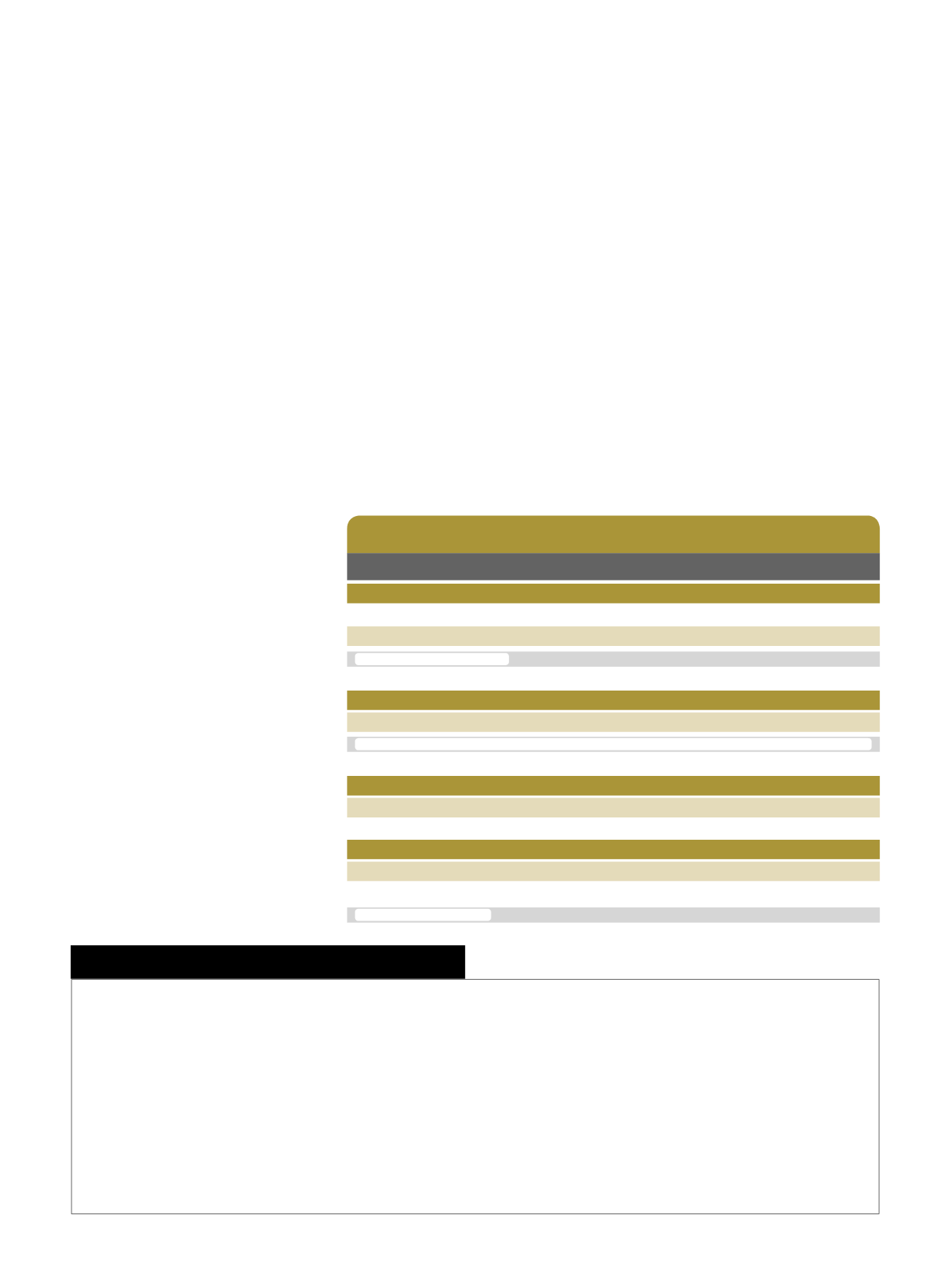
46
B
razil’s most popular fruit, the or-
ange, of which the Country is the
leading global producer, along
with the juice, dropped consider-
ably in production over the past
years and, in the 2016/17 growing season
(June through July), should register further
declines.Intheso-calledCitrusBelt(SãoPau-
lo andTriânguloMineiro), which concentrates
twothirdsofthetotal,thevolumeislikelytogo
down 18.7%, the smallest in 28 years, accord-
ing to an estimate by the Citriculture Surveil-
lance Fund (Fundecitrus), in December 2016.
For the next season, the segment anticipates
a possible reaction, although supply is sup-
posed tocontinue tight.
The explanation for the recent result lies in
poor “fruit setting” in themajority of the citrus
belt producing regions, by virtue of the abnor-
mally high temperatures in the processing pe-
riod. Furthermore, according to an analysis by
the Center for Applied Studies on Advanced
Economics (Cepea), of the Luiz deQueiroz Col-
legeof Agriculture (Esalq), linked to theUniver-
sityof SãoPaulo (USP), the reduction in thecit-
Due to the smaller production in Brazil and in the United
States, prices of both the raw material and the industrial prod-
uct registered expressive increase at home and abroad, ac-
cording to Cepea sources. In the partial average of the season
between July and December 2016, the price of sweet and late-
maturing oranges reached R$ 22.21 per 40.8-kilogram box, at
the processing plants, up 79.2% from the average of the same
period in 2015. Juice prices at the New York Stock Exchange, in
late 2016, fetched upwards of US$ 3,000 a ton.
Forthe2017/18growingcycle,theindicationascertainedbythe
CenterofAppliedStudies,inearlyJanuary2017,pointedtoincreas-
es in production. Within this context, the contribution is supposed
tobecomingfromthefruitingbudsandtheirsatisfactoryblossom-
ing, alongwithaverageor aboveaverage rainfall,mildclimate con-
ditions favoring the fruit setting process, besides a resumption of
investments in cultural practices, driven by the higher prices. The
main producing region is again supposed to reach results of ap-
proximately300millionboxes,against244millionestimatedforthe
previous season. However, the volumes will not be big enough to
bringorange juice stocksback to the technical balance.
n
n
n
Willingness to invest
Productionoforanges
andjuicesinBrazil,
leadingproducer,
droppedconsiderably,
pricesarehighanda
resumptioninthenew
cycleisexpected
Renewing
energy
rusparkoverthepastyears,stemmingfromthe
price crisis; limited investments by the farmers
andtheoutbreaksofthe“greening”diseaseac-
countforthesmallervolumeproduced.
As a result, the companies’ closing stocks
could be reduced to almost zero at the end of
the season. The volume of stocked juice an-
ticipated by the National Association of Citrus
Juice Exporters (CitrusBR) for that moment, in
June2017,issupposedtoremainat2thousand
tons, the lowest level in history and way be-
lowtheamountconsideredtobestrategic,300
thousand tons. Leading supplier of the prod-
uct,with97%destinedforabroad,andrespon-
sibleforabout70%ofthetotalvolumetradedin
theworld, Brazil supplies themarket and, from
July to December 2016, the shipments abroad
reachedthesamevolumeofthe2015period.
In the 2016 civil year, exports of Brazilian
orange juice were slightly up (4%) from 2015,
andinthefirstsixmonthsofthe2016/17grow-
ing season the numbers suffered no changes.
The mainmarket is the European Union, and
its purchases increased slightly in 2016, while
the partial numbers of the new cycle went
down. In themeantime, the shipments to the
UnitedStates,secondbiggestclientoftheBra-
zilian product and second-largest global pro-
ducer, now dealing with a smaller crop, went
up19%duringthefirsttwoquarters.
Inor Ag. Assmann
Números da laranja no Brasil
CAMPEÃDOSPOMARES
Orchard leader
Exportaçãode sucode laranjadoBrasil
AnoCivil
2015
2016
Volume (T de FCOJ equivalente)
1.038.466
1.080.448
Receita (US$mil)
1.764.710
1.800.460
Parcial safra (Julho-Dezembro)
2015/16 (2015) 2016/17 (2016)
Volume (T de FCOJ equivalente)
475.406
474.916
Receita (US$mil)
776.261
831.848
Fonte: Secex-MDIC/CitrusBR.
Safra
2015
2016
Área (ha)
665.174
667.529
Produção (t)
16.746.247
15.983.273
Fonte:IBGE/Dezembrode2016
CinturãoCitrícola (SãoPauloe TriânguloMineiro)
Safra
2015/16
2016/17
Produção (t)
12.266.520*
9.963.360**
Fonte: Fundecitrus/Dezembro 2016 (* 300,65 milhões de caixas de 40,8 kg/** 244,20 milhões de caixas de 40,8 kg)


